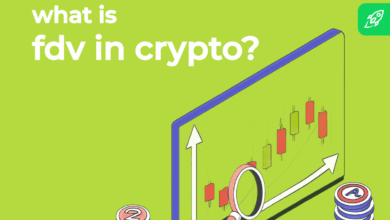Metaverse Workplace: The Future of Employment

In this article you will learn:
- What is the Metaverse?
- What is a Metaverse workplace?
- What are Metaverse technologies that enhance remote work?
- How to maintain employee safety in the Metaverse?
- How can Metaverse workplaces deliver value to businesses?
The Covid-19 pandemic has rapidly shifted the move towards more flexible manners of working around the globe. With more employees working from home, many employers turned to technology in attempts to mitigate some drawbacks of remote work, such as the lack of social interaction.
$1.5 trillion
The boost to GDP over the next eight years, thanks to AR and VR. (PwC)
A bunch of people think that connecting with the virtual environment is going to generate dozens of new jobs. As it seems that a digital gold rush is going on, tech professionals could secure positions in the Metaverse such as Metaverse architects, augmented reality (AR) or virtual reality (VR) software engineers, cybersecurity professionals, and 3D game designers. All of these positions are needed to get the Metaverse up and running.
Since many famous brands are already in the Metaverse, there has been a demand for event managers, real estate agents, virtual tour guides, and interior designers. It seems that there is something for everyone in the Metaverse.
Since the lines between the digital and physical world are blurring, Metaverse workplaces provide a more personalised experience for employees in terms of connecting people, knowledge-sharing, and increasing efficiency.
If we take a quick journey back in time, we can recall when the first smartphones were launched. Many thought that the trend might not take hold since it had only a screen to interact with. In a few years, the trend spread among more than 6 billion people and transformed how employees work and how they live. With the massive adoption of remote work and virtual offices, the Metaverse workplace isn’t far from becoming the ‘New Normal’. In fact, Mark Zuckerberg changed his entire Facebook empire to Meta because he thought that the metaverse is the digital future.
We came to the same conclusion in our ‘What is a Metaverse’ article. Read it to find out how blockchain gaming blazed the trail to a new virtual reality.
Metaverse can be defined as a collective virtual shared space, created by the junction of physical and digital reality. Think of it as the next iteration of the internet. The term itself stems from a 1992 science fiction novel Snow Crash.
Since it presents an immersive virtual environment, its development has often been linked to advancing virtual reality (VR) technology. Recent interest in metaverse development has also been influenced by the emergence of Web3, a new generation of a fully decentralised internet.
Metaverse and Web3 have been used many times interchangeably. However, these two are not synonyms. If you want to know more about Web3, why not read this article: ‘What is Web3?’.
The Metaverse economy is an independent virtual economy, driven by cryptocurrencies and non-fungible tokens (NFTs). The new economic dynamics within the Metaverse are creating a novel on-demand economy. Hybrid work, along with full remote work, paved the way for Metaverse workplaces. However, a company looking to do business in the Metaverse needs a digital-forward mindset.
Metaverse requires multiple technologies to function. Contributing technologies include augmented reality (AR), virtual reality (VR), the Internet of Things (IoT), artificial intelligence (AI), edge computing, and head-mounted displays (HMDs). There are many potential business impacts that will come with the development of Metaverse technologies in just a few years.
The Metaverse promises a new era in which digital advancements and creativity will drive the economy in a broad variety of niches. At the moment, the barriers to entry are low due to a lack of established competitors and ‘physical world’ regulations. Metaverse is much more than just a virtual space where you can play games and socialise through your avatar.
An immersive virtual reality powered by new technology such as the Metaverse adds up to the idea that the use of virtual and augmented reality can improve, among other things, remote and hybrid work. After the Covid-19 pandemic experience, it is sure that working remotely is a trend that is going to stick. Metaverse workplace is an acronym for a virtual environment where one can work from anywhere.
While still in its early stages, the Metaverse concept provides an opportunity for companies to reset the balance between hybrid and remote work. Such an idea has a higher goal – to recapture interactivity, community building, fun team collaboration, and learning while maintaining the flexibility, productivity, and convenience of working from home.
The initial idea of the Metaverse was to create a global immersive experience where people can interact with each other through avatars. It is also a virtual space where people can work from their virtual office, take meetings in virtual meeting rooms, have social interactions with remote colleagues, and simply enjoy all the benefits of remote work from a digital office setting. Due to the massive acceptance of working remotely, work in the Metaverse seems highly realistic.
Hybrid work paved the way for the notion of entirely remote work. Online communication has been increasingly normalised, and a wide variety of video conferencing and collaboration tools have transformed corporate dynamics.
If the ability to work from home was taken away, two-thirds (66%) of workers would immediately start looking for a job that offered flexibility, and 39% would simply quit.
There are already many business use cases even though the technology is still in its infant stage. While people feared that working remotely could amount to people losing sight of corporate culture and human interactions, the Metaverse provides some good practice examples. In virtual workplaces, you can host meetings, run seminars and training sessions or use it as a collaborative space where remote workers can through their avatars meet in person and enjoy lunch breaks.
At the moment it seems as if everyone wants to jump on the Metaverse bandwagon. Big tech companies have already started creating virtual offices. Meta built Horizon workrooms to hold meetings with Oculus headsets, and Microsoft plans to integrate its VR/AR platform Mesh with Teams to create future immersive spaces inside a simple messaging app. However, due to the massive adoption of remote work, many start-ups smelled opportunity as well.
The Metaverse has become possible due to the contributions of several technologies. Let’s examine some of these technologies and how they impact virtual work in the Metaverse.
Blockchain technology forms the understructure of the Metaverse since most of the applications run on blockchain. It provides decentralisation, immutability, transparency and increased security. In other words, all that is necessary for the efficient functioning of the Metaverse.
Blockchain technology aids in the integration of several important functions such as digital ownership, governance, interoperability and value transfer. Blockchain technology is trustless, unbiased and transparent. If you think about what is important to have to work remotely in the metaverse, you will probably think of all these traits.
In relation to virtual work, it is important to set out rules, share assignments, and facilitate payments. Smart contracts play an important role within blockchain technology. These are basically computer protocols intended to digitally facilitate, verify or enforce a contract according to rules determined upon their creation. There is no need for third parties. Involved parties in a smart contract are familiar with contractual terms and therefore, have the same expectations from the arrangement.
Since smart contracts cannot be modified by a single party, it ensures fairness. This is especially useful in terms of payment. For example, think of a scenario where employees have arranged with the employer that they get paid when they upload their work to the cloud. A smart contract can be programmed to automate the payment according to a preset formula. It saves the employer’s time and adds up to overall fairness.
Aside from the Metaverse, AI has almost become a true game changer. From Alexa and Siri to ChatGPT, AI played a big role in improving the performance of everyday tasks. When it comes to business-related strategy planning, problem-solving, and decision-making, AI is valuable because it can process data rapidly with the help of machine learning techniques.
AI should play a crucial role in transforming the Metaverse into a commercially accessible reality. Advanced computer vision algorithms enable machines to accurately map the physical world to recreate highly realistic 3D digital environments.
We have mentioned that in the immersive virtual world, you can connect with your colleagues through your avatar. Here we can highlight two main benefits of AI. First, AI is used in the Metaverse as an avatar creator. Its engines can efficiently analyse 2D and 3D images to generate more accurate and realistic-looking avatars.
Secondly, our colleagues in Metaverse won’t be only limited to the avatars of real-world humans. Additionally, it will be joined by a number of digital colleagues – AI-powered bots. These digital humans will act as assistants, advisors, and AI-enabled digital coaches for employees.
Bots as digital humans will be able to automate work duties and do the heavy lifting to free up the human workers’ brainpower for higher-level thinking and value-driven tasks. Therefore, human work itself could be more productive and less occupied with repetitive tasks.
Virtual Reality (VR) technology provides a truly immersive experience by placing users in a 3D virtual space. It basically provides a collective experience so users can indulge in divergent social and work activities. In the past, it was associated with video games, but it has proven to be useful in workplaces as well.
Remote working with face-to-face contact is supported by video conferencing technology and has been efficient so far. However, it was not as good as in-person collaboration. Virtual reality is able to mimic and practically replace in person conversations and social connections. As technology keeps evolving, it is going to offer sensory experiences as well.
For now, you need to use a VR headset to get a complete 3D immersive experience. The good thing is that VR-enabled headsets are becoming more and more accessible and added to the list of office equipment by many companies.
Augmented Reality (AR) is a technology that stitches the interface of the physical world and the virtual space. Basically, it places digital objects in our real world.
The technology provides users with a live view of the physical world. AR apps enable you to see the actual environment and make virtual changes to it easily.
For example, the car manufacturer BMW has put into motion its BMW Individual AR app that enables a user to walk around a virtual car and view all important details. It features a life-size view of the car that can be pictured in a variety of places.
For a virtual space to accurately imitate the physical space, objects within the digital environment should have some imperative qualities. Specifically, they should be immersive and three-dimensional in space.
That is where 3D technology jumps in. Users can create all kinds of objects, from small toys to big infrastructures such as skyscrapers.
Even though virtual offices are entirely digital, they still need to reproduce some fundamental requirements. Therefore, users can build communal places such as meeting rooms, conference rooms, lobbies, halls, personal offices, and other dedicated spaces. By achieving this, Metaverse has a real chance in becoming the future of work.
Metaverse could likely revolutionise our workplaces, but it comes with a few challenges. Even though people will be using avatars, they will be interacting in a place that constitutes an office setting. Companies will eventually need to decide how to monitor the virtual space to avoid health and safety issues and problematic behaviour such as online harassment, bullying or abuse.
We will now discuss some of the employment law considerations that employers should take into account when setting up a workplace in the Metaverse.
In any work setting, health and safety of workers is a vital matter. Working in the Metaverse isn’t going to change that and there are a few implications employers need to take into consideration. For example, using VR headsets can lead to dizziness, loss of balance, and disorientation. This is often referred to as ‘cybersickness’. Employers would probably be advised to conduct risk assessments occasionally and check on the employees’ well-being.
Another matter that should be taken into account is mental health. Even though research has shown that most employees prefer remote work over spending time in the office space, employers need to be mindful of the impact moving to a virtual workplace could have on employees’ mental health and make efforts to prevent feelings of disengagement and loneliness.
Lastly, remote work should encompass clear boundaries between work and private life as well. European regulators have been debating on this topic since France decided to introduce a legal right to disconnect. The right to disconnect refers to an employee’s right to be able to disengage from work and refrain from engaging in business-related electronic communications during non-work hours.
Workers accessing a virtual office space in the Metaverse should be treated similarly to accessing a physical workplace. The prevention of discrimination, harassment, and bullying in the workplace is a vital matter of employment law as well.
For example, misbehaviour may amount to one employee making offensive comments or jokes about a colleague’s avatar that relates to a characteristic protected under the law such as race, sex, or age. Such conduct represents harassment. Additionally, interacting through avatars from the safety of one’s home could easily give rise to virtual sexual harassment.
Given the manners in which avatars are being created and how they are going to be used, it seems that there might be an opportunity for employees to develop a certain degree of anonymity. Such risks could lead to a lack of responsibility. To resolve such issues, employees could be required, for example, to use their real names in virtual offices to enhance personal accountability.
As said above, employers should oversee virtual workplaces to ensure health, safety and avoid offensive or degrading conduct. However, balance must be established in doing so. Employers would need to balance the need to safeguard employees with data protection regulations to process data transparently.
This can be done by publishing privacy policies on employee monitoring that addresses what data the employer is going to process and conducting risk assessments before collecting data in the Metaverse.
Since Metaverse basically amounts to a mixed reality, it could have real-world implications. For example, virtual offences usually lead to legal complaints. Apart from setting out complaints policies and procedures in digital workplaces, the question of applicable law could arise as well.
Usually, it matters where you are physically when you sign a contract. If we pose that question in the Metaverse, things might seem complicated at first. As the virtual environment continues to develop, there will be many legal considerations to analyse. For now, many experts agree that the same laws that apply in the real world would apply to digital offences as well.
Using a Metaverse work environment will provide companies with financial advantages because working in the Metaverse can save time and reduce ordinary office expenses. It is also useful for businesses that plan to expand because, at the moment, the barriers to entry in the Metaverse market are low.
Many people are concerned whether working remotely in the Metaverse will amount to people feeling more isolated. However, there are many possibilities to socially connect in the digital space. Since workers would be entering their digital office space and communicating through avatars, there are many possibilities to enhance virtual team collaboration, attend social activities, and meet with colleagues at company events.
The idea is to create an easier working life in a remote virtual office. Even though the Metaverse still sounds sometimes like a science fiction novel, it is soon going to become our reality.





